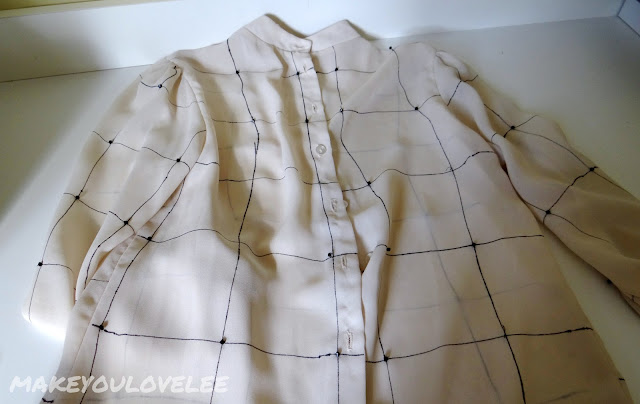Hello Lovelees!
A “paraben-free”
product trend has been noticed particularly in the last few years, and
therefore increasingly more mainstream cosmetics companies are producing at
least some products in their line to be “paraben-free”.
So what are
parabens? I did a bit of research for myself and tried the best I could to simplify and share what I managed to absorb...
Parabens
are a family of chemical preservatives found in a majority of cosmetic and
personal care products. They increase
shelf life by inhibiting the growth of bacterial and fungal contaminants. Most often on ingredient labels they are
listed with the suffix "–paraben" eg methylparaben, ethylparaben, propylparaben,
butylparaben, isobutylparaben etc. Even at very low levels (usually between
0.01% to 0.3% in skincare) they are extremely proficient at combating bacteria
and microbes. Bacteria love water and
the fats in your cosmetics, plus the warm moist environment of your bathroom
where your products are often stored.
They are introduced everytime you stick your finger in a jar or make any
contact with the product, and without preservatives, your product will go off
by changing to become rancid, smelly and/ or separate.
So we
definitely need some sort of preservative in our cosmetics – what’s the
problem with parabens? They happen to be
cheap and effective…sounds awesome!
The most
notable study in the parabens debate was conducted by Darbre in 2004. They had found parabens to be present in 18
out of 20 samples of breast cancer biopsy results. It was criticized however for the small study
size and that it was not definitive where the parabens had come from or if they
had caused the cancers, but rather simply, that they were present.
Consider
that there are many other compounds in the environment that are able to mimic
estrogen activity. Parabens do have weak
estrogen-like properties, being 10 000 to 100 000 times less strong than natural estrogens (the estradiol hormones) , if we are analyzing the role of
estrogens in breast cancer development. Parabens are widely present, in
personal care products, cosmetics and even foods (can even be naturally occurring
in blueberries!). There have been other
studies that have found some form of parabens in 99% of US adults’ urine
samples. This confirms that parabens come from many sources and may not
causally link to particular health problems. The concern was that paraben residues were discovered at concentrations up to 1 million times higher than the estrogen levels that would naturally be found in human breast tissue, from a study that collected 40 mastectomies of women with primary breast cancer. This more than compensates for the comparative weakness of the parabens compared to estradiol.
On this it is important to note however, that estrogenic activity and mutagenic (cancerous)
activity of estrogens are not the same.
Mutagenic activity is rather dependent on free radical chemistry. That is the why a longstanding health buzz
word is “antioxidants” to aid in combat of free radicals in our body.
Cancer
organisations such as the American Cancer Society obviously continue to keep an
eye on the debate and studies available on the subject . To date, parabens are still listed under
“factors with uncertain, controversial, or unproven effect on breast cancer
risk”.
So why not
just eliminate the risk of parabens and use their alternative
preservatives?
These
alternatives tend to require 6 or 7 times higher level of concentration than
parabens to have the same efficacy. The
more preservative content in your creams more potential for skin irritation and
often a tradeoff on the overall texture of the creams. Parabens are in fact FDA
approved and for some reason fuels a lot more controversy than other “natural
ingredients” such as soy or ginseng or even coffee extracts that have also been
found to be a possible breast cancer risk.
PERSONAL
OPINION: just because something is not proven yet, doesn’t mean it does not
exist (in this case, parabens being a cancer risk). However, because there have
been some red flags raised it does not hurt to be careful where possible :p
Pathetically in my case, it simply translates
to me feeling better when I buy a product that I like due to its performance
and proven results, and see that it actually happens to be paraben-free too!!
Everything
in moderation I think is the key.
If you are
somewhere in the middle of the bellcurve then the odds are not necessarily
against you. There are so many “health
dangers” out there in the modern environment and lifestyle it is hard to police
everything you do or use.
Having said
that I think if you have a strong family history of breast cancer, where
possible it doesn’t hurt to take a more conservative approach with your
personal care products, and try opt for preservative free alternatives. The most under attack in the paraben debate
is anti-perspirants or deodorants that are applied directly to the
underarm. Due to the ester-bearing form
of the parabens found in the tumours , it has been suspected that the parabens
that they came from something applied to the skin and helped to explain why up
to 60% of all breast tumours are found in the upper outer quadrant of the
breast nearest the underarm. Breastcancer.org actually also reminds readers
that parabens are found in many other tissues in the body, because of their wide use. A resourceful link if you want to look up cosmetic products:
by the Environmental Working Group (EWG)'s where they give a hazard score based on the ingredients' links to health issues or allergies.
Conclusion: Stay beautiful, but stay safe ;)
Please share this if you learnt something so others can do the same!
;) Connie Follow on Twitter @MakeYouLoveLee ; Facebook: /makeyoulovelee
Links I looked up:












